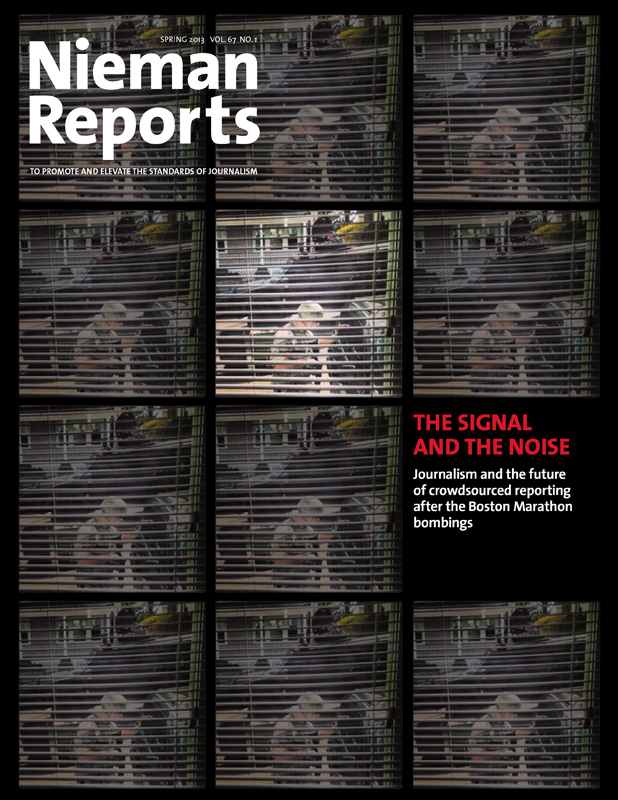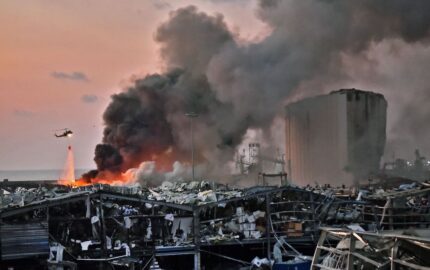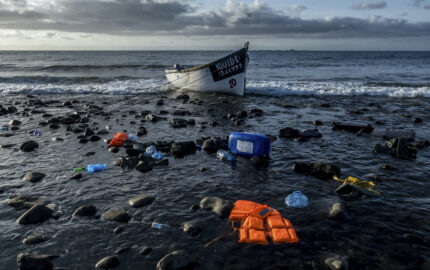The way South Carolina Governor Nikki Haley tells it, what her state needs is more tax cuts and what it doesn’t need is the “public policy nightmare and fiscal disaster that is ObamaCare’s Medicaid expansion.”
But to Charleston Post and Courier reporter Doug Pardue, who has spent more than 15 years reporting in South Carolina, including eight months on an in-depth exploration of the state’s profound inequities, the facts say otherwise: Progress in the state can’t come without more tax dollars, and rejecting federal money to expand Medicaid effectively denies easier, cheaper healthcare access to about 500,000 South Carolinians, most of whom are black and poor.
So that’s what he reported.
Under the banner “Forgotten South Carolina: A Legacy of Shame, A Blueprint for the Future,” Pardue published a major series about the rural counties whose third-world conditions drag the state’s rankings to “the bottom of nearly every list you want it to be at the top of.” The “lack of significant state investment in the basic building blocks of its society—health, education, and economic opportunity—remains a key reason why South Carolina can’t shake the sorry legacies of its past, and why so many of its residents remain trapped in ignorance, sickness and poverty,” he concluded in a video that accompanied the series online. The stories also exposed the desperate need for improved healthcare and the obvious solution: “Take the federal government up on its offer to extend Medicaid to the uninsured.”
Pardue extensively quoted state officials, including Republican Governor Haley’s social services director, Tony Keck, arguing against the expansion of Medicaid. “But,” Pardue says, “I don’t buy it. What [Keck] says just goes against the weight of my looking at the numbers.” Reporters shouldn’t just balance one voice against another when there are observable, reportable facts, according to Pardue: “You should say what you discover. I believe the best journalism cuts through all of the he said/she said.”
To many people, watchdog reporting is synonymous with investigative reporting, specifically, ferreting out secrets. But there’s another, maybe even more crucial form of watchdog reporting, especially in this age of relentless public relations and spin. It involves reporting what may well be in plain sight, contrasting that with what officials in government and other positions of power say, rebuffing and rebutting misinformation, and sometimes even taking a position on what the facts suggest is the right solution.
Related Reading
Read a tribute to Marder by former Nieman Curator Bill Kovach
Murrey Marder, the longtime Washington Post reporter who funded the Nieman Watchdog Project and who died in March at age 93, was the embodiment of that kind of watchdog. Most notably, when Senator Joseph R. McCarthy was ruining lives and careers through unfounded accusations of Communist infiltration in the early 1950s, Marder refused to operate as his megaphone and instead insisted that McCarthy substantiate his charges. Through meticulous, persistent newsgathering, Marder ultimately exposed McCarthy’s claims as lies and exaggerations.
Later in his life, Marder advocated for a more assertive press, unafraid to ask unpopular and unconventional questions the public couldn’t or wouldn’t, and willing to fight deception and misinformation. Hedrick Smith, a Pulitzer Prize-winning author and producer who worked alongside Marder during the Vietnam War, called him “the best of a generation of investigative reporters who did not think of themselves as investigative reporters, but they were, because they were constantly challenging the official policy and the official explanations of policy.”
The idea that reporters should push back against spin and deception may not sound controversial, but recent journalistic history includes two catastrophic failures to do so. In the run-up to the war in Iraq, with a few notable exceptions, such as the Knight-Ridder Washington bureau and Washington Post reporter Walter Pincus, the press was correctly characterized by former Bush press secretary Scott McClellan as “complicit enablers.” And the 2007 financial crisis was a big surprise to the public at least in part because reporters served as cheerleaders for their highly placed sources while dismissing the naysayers. Press critic Michael Massing sees both breakdowns as related: “They were two aspects of an institutional failure that mirrored one another, and in both cases—whether it was Colin Powell and weapons of mass destruction or Alan Greenspan on the wonders of the financial markets—I think the press was just dazzled and did not do its job.”
So what’s the prognosis?
Every day, it seems like fewer and fewer reporters are facing off against an ever-growing and ever-more-sophisticated spin machine. “Journalists face the prospect of being spun or misled or manipulated almost every day by sources,” says Tom Rosenstiel, executive director of the American Press Institute. He recalls how legendary war reporter Homer Bigart used to describe journalism that uncritically accepted the official version of things as “clerkism.” These days, Rosenstiel says, “We see … more clerkism.”
Reporters may think it’s safe to recount a dubious claim in a neutral way because readers will conclude on their own that it’s dubious, says Brendan Nyhan, a government professor at Dartmouth College and scholar of spin. But there’s a real risk that readers will simply accept it. And that, in turn, “encourages elites to make dubious claims,” Nyhan says, adding, “people are letting themselves be used in certain cases, and I think it creates pathological incentives.”
Deborah Nelson, a Pulitzer Prize winner who teaches investigative reporting at the University of Maryland’s journalism school, says reporters should come forearmed to any story involving topics that have been the target of misinformation with a well-reported “short, authoritative paragraph that cuts through the BS.” Some media observers have hailed the increase in fact checking during recent elections as a sign that news organizations are embracing the role of umpire, rather than conduit. But fact checking is often separated from and subordinated to the main stories and descends into nitpicking rather than addressing broader concerns about credibility. From Nyhan’s perspective, fact checks are a first step. “Relative to radical neutrality, I think they’re pretty good,” he says. “But we don’t want to ghettoize fact checking. It should be a core function of journalism.”
Nelson has a dramatic suggestion, based on research by her University of Maryland journalism school colleague, Susan D. Moeller, who in 2004 examined the spread of inaccurate reports about weapons of mass destruction in Iraq. Moeller concluded that the “inverted pyramid style of news writing, which places the most ‘important’ information first, produced much greater attention to the administration’s point of view on WMD issues, at the expense of alternative perspectives.” So Nelson urges reporters who have reason to doubt official statements to express those doubts as high up in the story as the statements themselves. Reporters have to recognize that a lot of people never read past the top, and “pack the truth in there,” Nelson says.
Truth-telling and source maintenance, however, can sometimes be in conflict. “There’s always the source problem in journalism if you’re covering a beat, if you’re worried about being scooped by the competition,” says Michael Hudson, a reporter at the Center for Public Integrity [who recently became a senior editor at the International Consortium of Investigative Journalists] and author of the book “The Monster: How a Gang of Predatory Lenders and Wall Street Bankers Fleeced America—and Spawned a Global Crisis.” The question then becomes: “Do you sacrifice the ability to go after the really big stories in order to keep a steady flow of the tidbits, of inside baseball?”
When sources and reporters each have something the other wants, deals get struck that are favorable to both sides; for instance, a source gets anonymity, and the reporter gets the truth. But these days, high-level sources are increasingly getting what they want from reporters and only giving them spin in return. “The power has shifted for structural reasons toward the newsmaker and away from the newsgatherer,” says Rosenstiel. “It’s a seller’s market for information.”
Hudson recalls that when he was a reporter at The Roanoke (Va.) Times in the 1990s, exposing the subprime mortgage business, he didn’t have high-level sources at all—which, he says, is why he got the story. “That forced me to talk to mid-level and low-level people and former employees,” he says. Then he was able to piece the facts together. “Just having access to top-level executives is often treated as the end-all and be-all in journalism,” he says. “But often it gives you a very skewed perspective, and it gives you a false sense of security.”
Reliance on mid-level sources—and lack of access to high-level ones—was one of the reasons the Knight-Ridder Washington bureau raised so many doubts about the Bush/Cheney campaign for war in Iraq. Now owned by McClatchy Newspapers, that bureau continues to break stories that run contrary to the official narratives. After reviewing classified intelligence reports, reporter Jonathan S. Landay recently called out the Obama administration for deceiving the public about the targets of its drone campaigns, many of whom did not present threats to the United States. And correspondent David Enders is consistently reporting facts from the ground in Syria that contradict the administration’s contention that the U.S. could send help to Syrian rebels but somehow keep it out of the hands of Islamist radicals.
Massing urges reporters to spend less time quoting high-level sources talking about what the government should do and more time exploring the possible consequences, especially when military action is one of them. These days, for example, “there is a sort of pack mentality on the whole Iranian issue,” Massing says. The coverage is primarily about whether Iran is getting a nuclear weapon, and how serious a problem that would be, “as opposed to showing what the enormity of a war would be or a military strike.”
As American newsrooms shrink, the notoriously expensive field of long-form investigative journalism has taken a particular hit. And while it doesn’t always take a big investigation to disprove an obvious deception, sometimes it does, like the Pulitzer Prize-winning New York Times stories exposing working conditions at Chinese factories making Apple products or showing how multinational companies like Wal-Mart handle the bribery of foreign officials.
The good news in investigative reporting is all the nonprofit news organizations trying to come to the rescue, including groups like ProPublica and the Center for Investigative Reporting, along with fellowship programs from groups like the Nation Institute and the Alicia Patterson Foundation. “I think we have to try to fund it wherever we can,” says Margaret Engel, executive director of the Alicia Patterson Foundation. “It’s no substitute for the diminished newsrooms across America, but at least it’s keeping some practitioners working in the field.”
The truth-to-power stories you read in the mainstream media are increasingly underwritten by nonprofits, like the recent Newsweek story “What BP Doesn’t Want You to Know About the 2010 Gulf Spill,” written by Mark Hertsgaard, a fellow at the New American Foundation, with support from the Nation Institute’s Investigative Fund.
One particularly promising way to marshal investigative reporting resources is for multiple news organizations to work together. The latest and biggest example of that trend is the launch of “Secrecy for Sale: Inside the Global Offshore Money Maze,” a project by the International Consortium of Investigative Journalists (ICIJ) that involved journalists from 46 countries. The series breached the extraordinary secrecy surrounding companies and trusts in offshore havens, exposing a vast network through which banks and other financial advisers help corporations, the mega-rich, and even the moderately rich hide money. Collaboration has a huge upside, according to ICIJ director Gerard Ryle: “You get to benefit from everybody’s work. It’s not going to work every time for every story, but we certainly showed it could work.”
In-depth investigative reporting is crucial, says Hedrick Smith, “but a far more important need every day, week in and week out, is the exposure, or at least the challenging, of conventional wisdom, particularly when people are running gung ho into some sort of policy, and when Washington is being run by groupthink and the press becomes part of it.” That’s where knowledgeable, experienced beat reporters come in. “You can only do that when you have a news organization that has beat reporters that cover these issues, day after day, year after year,” Smith says.
The trade and specialized press are expanding but, Nelson notes, tend to serve power rather than expose it. Here again, nonprofits are an important factor, especially when they concentrate their energies in specific areas. The Center for Public Integrity, for instance, maintains an intense focus on money’s corrosive effects on politics. ProPublica has devoted itself to chronicling how banks and the government have consistently failed homeowners facing foreclosure. And good-government groups are increasingly doing important journalism, whether it’s the Union of Concerned Scientists reporting on unrealistic aspirations for missile defense or the Project on Government Oversight exposing the connection between the revolving door and industry control of the government agencies supposed to regulate it.
InsideClimate News, a tiny nonprofit website with seven employees and no office, won the 2013 Pulitzer Prize for National Reporting for exploring a largely ignored but particularly ominous oil pipeline spill. Publisher and founder David Sassoon says he started the site in 2007 in part because the mainstream press was reporting on climate change as if there was legitimate debate over whether human activity is causing temperatures to climb. “We wanted to model good reporting about the climate,” he says. And that meant “not feeling obligated to give balance to political operatives, because that’s a false balance.”
Sassoon said the site’s overall goal is to fill the large gaps that the mainstream media have left in coverage of climate and energy issues. “We don’t want to be chasing breaking news because the mainstream media wires and others do that quite well,” he says. “What seemed to be missing was connecting dots, and context, and also covering news that was sitting there waiting to be reported on.” Rather than wait for events, or for conclusions to be drawn by the authorities, Sassoon says, his goal is to find problems that are going unaddressed, raise questions that need to be answered, and report facts that are missing from the debate. Mainstream reporting on climate change gives less credence to the denialists these days, Sassoon says, but now there are new gaps to fill, caused by newsrooms cutting back on environmental coverage.
While some observers note that the constant news cycle means there’s less time than ever for reporters to analyze events before reporting them, it also makes that analysis more crucial—and valuable. Many readers may have already seen the breaking news headline somewhere else, like Twitter. “Most people who read now want to know why something happened, they want to put it in context,” says The Washington Post’s Pincus. “So it needs to be done by people who have experience.” Knowledgeable beat reporters can put the news in context based on their expertise and test claims based on their observations. Their personal experience also is often relevant.
Reporter Trymaine Lee’s personal history, for example, helped him see how the Trayvon Martin story was not a run-of-the-mill he-said/she-said crime story, but a powerful real-life parable about race and justice. Initial reports last year about the deadly shooting of the unarmed black teenager by a neighborhood watch volunteer in central Florida raised few alarms. But Lee, along with two other journalists—all three of them black men—recognized a story that merited national attention. “We kind of had a basic premise, that the scales are imbalanced, oftentimes for us, as black people, as minorities,” Lee says. “Viewing the story through that filter made us more sensitive. There was something unjust about it. And that line of injustice was the guiding thing.”
Lee, who now works for MSNBC.com, was then at The Huffington Post, and credits his ability to report the Martin story the way he did in part to the culture at The Huffington Post, where founder Arianna Huffington encourages her reporters to call things as they see them. Reporters at traditional news organizations too often give in to the “pressure to conform to a formula,” Lee says, and “end up muting a lot of their stories.”
Collaboration across news organizations has particular potential when telling stories that individually don’t bring enough bang for the buck, but which seen more broadly say something important about our society. Imagine, for instance, local newsrooms around the country joining forces to tell the stories of people struggling to survive at minimum wage, or indigent defendants denied adequate legal representation, or victims of gun violence, or indigenous businesses devastated by multinational chains. The modern news environment’s appetite for conflict and controversy could responsibly be slaked by holding politicians accountable for their campaign promises or by assessing how much or how little elected officials’ voting records reflect the will of their constituents.
As Murrey Marder told the first Nieman Watchdog Conference in 1998: “Watchdog journalism is by no means just occasional selective, hard-hitting investigative reporting. It starts with a state of mind, accepting responsibility as a surrogate for the public, asking penetrating questions at every level, from the town council to the state house to the White House, in corporate offices, in union halls and in professional offices and all points in-between.”
Dan Froomkin, former senior Washington correspondent for The Huffington Post, writes about accountability journalism for Nieman Reports.
More on Watchdog Reporting
From Shoe Leather to Big Data: ProPublica and the Future of Watchdog Journalism
By Robin Fields
Ask The Right Questions: MuckRock Makes FOIA Requests Easy
By Michael Morisy
No Profession for Lone Wolves: Watchdog Reporters Need to Work Together
By Stuart Watson
Cross-Border Collaboration in Watchdog Journalism
By Stefan Candea
Let the Readers Know: How Journalists and the Public Can Work Together
By Ken Armstrong
In Korea, Watchdog Journalism Worth Watching on Television
By Chong-ae Lee
Do the Right Thing: Watchdog Reporters Handle a Bombing in Philadelphia
By William Marimow
Our Communities Crave Watchdog Journalism
By Raquel Rutledge



